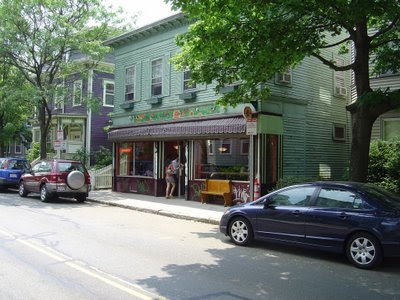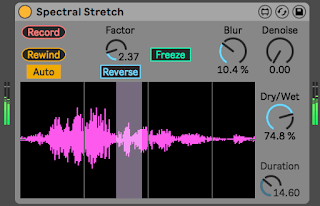Electroclarinet 2 - Live Sound Processing Part 2
Looking for the studio album? Visit www.electroclarinet.com
A month ago, I described the live electronic processes used in parts 1 and 3 of Electroclarinet 2. Let me now present the processes number 2, 4, and 5. They use real-time harmonization, either to create chord sequences (part 2 & 4) or arpeggios (part 5).
From frozen sound to chord sequence
At the end of the serenade, at around 3:18, I freeze the clarinet note. This frozen sound is heard synthesized at around 3:30, then transformed from 3:49 into a chord sequence. I especially like this sound processing, because it uses the harmonic sequence that Debussy composed in the third movement of his Sonata for Cello & Piano.

Patch #2: a sound is frozen live, then harmonized into a chord sequence.

Patch #4 is similar to patch #2, with a different harmonic sequence.
Sound is frozen at around 5:25, played back at 5:33, and the chord sequence starts around 5:40.
Arpeggios in a whole tone scale
The last live electronic sound processing in this composition is an arpeggiator, in other words, an harmonizer with individual delays. This piece being an homage to Debussy, I found it appropriate to use a whole tone scale. Note that whether the clarinet plays or not in the C whole tone scale is not important: the output of the arpeggiator always stays in the same scale. That enables me to use more tensions in the melody, while keeping the harmonic field coherent.




Comments
Post a Comment